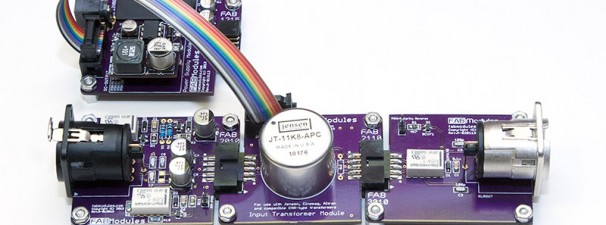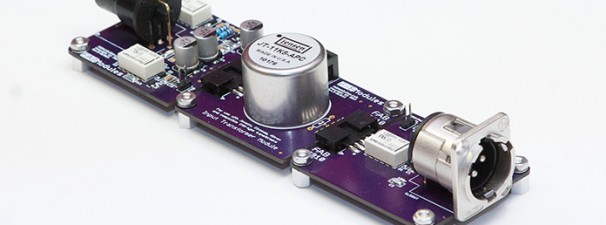I did a quick test just to see if all the FAB Modules work and play well together. I’m very pleased with the results…. The modules were quiet, and even with a long signal chain as you can see in the picture, there was hardly any noise I could hear. (For testing, I hooked up a condenser microphone and connected the outputs to a KRK RP8 8″ Monitors. No humming, no RF noise, nothing.)
Everything works… the logic control Phantom Power, -20dB Pad, Polarity Reverse, and the +6dB Boost (1:2 Transformer Ratio). To get the FAB4312 Non-Inverting Amplifier working, I hooked up a small 10K potentiometer so I can adjust gain. For now, I just used a jumper and connected the Phantom Power Logic control inputs directly to a spare V+ terminal on the FAB1215 PSU module.
Continue Reading…





